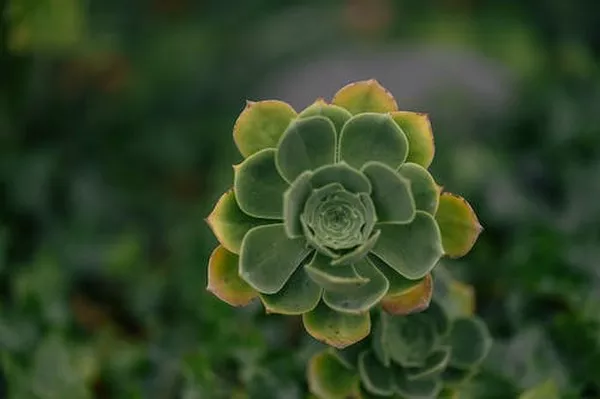In the realm of indoor and outdoor gardening, succulents have carved a special place for themselves. These fascinating plants, known for their unique ability to store water in their leaves and stems, boast a stunning array of shapes, colors, and textures. With their low-maintenance requirements and resilience in various climates, succulents have garnered a dedicated fanbase of gardening enthusiasts worldwide. In this article, we will explore the captivating world of succulent plants, understanding their characteristics, care tips, and the growing popularity of these alluring botanical wonders.
What Are Succulent Plants?
Succulents are a diverse group of plants that have adapted to survive in arid and semi-arid regions, where water is scarce. The term “succulent” originates from the Latin word “succus,” which means juice or sap, alluding to their unique water-storing abilities. These plants store water in their fleshy leaves, stems, and roots, enabling them to endure prolonged periods of drought.
One of the defining features of succulents is their fleshy and thickened leaves, which store water like natural reservoirs. This adaptation allows them to survive in harsh conditions where other plants might struggle to thrive. Although succulents are commonly associated with desert landscapes, they can be found in a wide range of environments, from tropical rainforests to alpine regions.
Types of Succulent Plants
The world of succulents encompasses an astonishing diversity of species, each with its unique appearance and characteristics. Some of the most popular and striking types of succulents include:
a. Aloe Vera (Aloe barbadensis miller): Known for its medicinal properties, Aloe Vera is a well-loved succulent with spiky, fleshy leaves that store a soothing gel. It is prized for its skincare and healing properties.
b. Echeveria: Echeverias are rosette-shaped succulents with stunningly vibrant colors, ranging from pastel pinks to deep purples. They are popular for their ornamental appeal and are often used in floral arrangements.
c. Sempervivum (Hens and Chicks): Sempervivums form tight clusters of rosettes, with the “hen” plant producing “chicks” or baby plants around it. These hardy succulents come in various shapes and colors.
d. Crassula (Jade Plants): Jade plants are known for their thick, oval-shaped leaves and are considered symbols of good luck and prosperity in some cultures.
e. Sedum: Sedums are versatile succulents that come in various sizes, shapes, and colors. They are well-suited for ground cover and rock gardens.
f. Haworthia: Haworthias are small, spiky succulents that come in a wide range of shapes and patterns. They are ideal for indoor gardening and make great houseplants.
Caring for Succulents
One of the reasons for the growing popularity of succulents is their reputation for being low-maintenance plants. However, providing the right care is essential to ensure their health and longevity. Here are some tips for caring for succulents:
a. Sunlight: Succulents thrive in bright, indirect light. Place them near a sunny window where they receive at least four to six hours of sunlight daily. Avoid exposing them to direct, intense sunlight, as it can scorch their leaves.
b. Watering: One of the most crucial aspects of succulent care is proper watering. Allow the soil to dry completely between waterings to prevent overwatering, which can lead to root rot. During the growing season (spring and summer), water sparingly, and reduce watering during the dormant season (fall and winter).
c. Well-Draining Soil: Succulents prefer well-draining soil to prevent waterlogged roots. A mix of potting soil, sand, and perlite is ideal for most succulents.
d. Container Selection: Choose containers with drainage holes to prevent excess water from accumulating. This ensures that the roots do not become waterlogged.
e. Temperature: Most succulents prefer warm temperatures and can be sensitive to frost. Protect them from extreme cold and move them indoors during the winter in colder climates.
f. Propagation: Succulents can be easily propagated through stem or leaf cuttings. This is a fun way to grow more succulents and share them with friends and family.
g. Fertilizing: While succulents don’t require frequent fertilization, a diluted, balanced fertilizer can be applied during the growing season to provide them with essential nutrients.
Growing Popularity of Succulents
The appeal of succulents goes beyond their aesthetic beauty and ease of care. Several factors contribute to the growing popularity of these charming plants:
a. Urban Gardening: With the rise of urban gardening and limited space in urban areas, succulents have become popular choices for indoor gardening and apartment living. Their small size and low-maintenance needs make them ideal for city dwellers.
b. Home Décor: Succulents add a touch of natural beauty and greenery to interior spaces, enhancing home décor with their sculptural forms and vibrant colors.
c. Gifting and Wedding Favors: Succulents have become popular gift items and wedding favors due to their long-lasting nature and symbolic meaning. They represent enduring love and resilience, making them perfect tokens of appreciation and affection.
d. DIY Projects: Succulents are frequently used in DIY projects, such as terrariums, wreaths, and living walls. Their versatility allows for creative expression in various craft and gardening endeavors.
e. Therapeutic Benefits: Gardening, particularly tending to succulents, is known to have therapeutic benefits, reducing stress and promoting relaxation. The act of caring for these resilient plants can be a source of joy and satisfaction.
Conclusion
Succulents, with their water-storing capabilities and diverse array of shapes and colors, have captured the hearts of gardening enthusiasts and interior decorators alike. From the soothing Aloe Vera to the vibrant Echeveria, these fascinating plants add an element of charm and natural beauty to any space. Their low-maintenance requirements and resilience make them ideal companions for both seasoned gardeners and beginners.
As the popularity of succulents continues to grow, these captivating plants have become much more than mere decorations. They symbolize endurance, prosperity, and a connection to the natural world. Whether adorning homes, offices, or event spaces, succulents have undoubtedly earned their place as some of the most beloved and treasured plants in the world of gardening.


